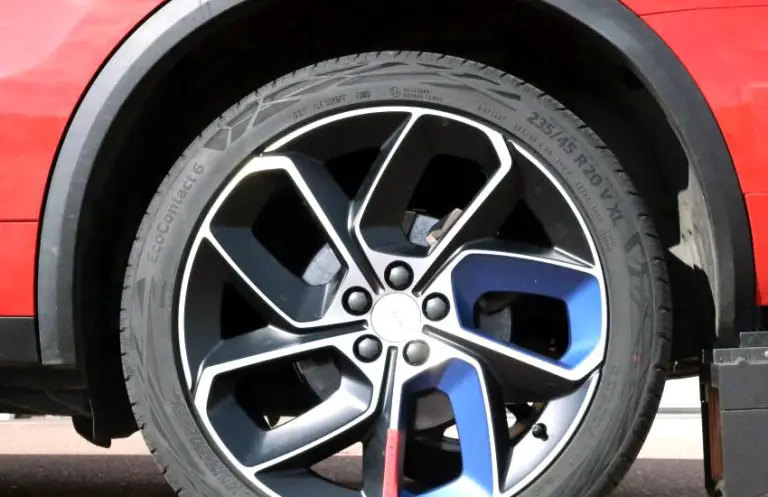Yes, carbon brake pads are compatible with alloy rims. Carbon brake pads provide excellent braking performance and are suitable for use with alloy rims.
Alloy rims are commonly used on bicycles due to their lightweight and strength. Carbon brake pads offer superior stopping power and modulation, making them a preferred choice for performance-oriented cyclists. When paired with alloy rims, carbon brake pads offer reliable braking performance without causing excessive wear on the rims.
Moreover, carbon brake pads are designed to dissipate heat effectively, which is essential for maintaining brake performance during prolonged use. This compatibility between carbon brake pads and alloy rims makes them a popular combination among cyclists looking for efficient and durable braking solutions.
Credit: newsroom.porsche.com
Understanding Carbon Brake Pads
Carbon brake pads are a popular choice among cyclists and enthusiasts due to their superior stopping power and performance. Understanding carbon brake pads can help you make an informed decision when it comes to choosing the right brake pads for your alloy rims.
What Are Carbon Brake Pads?
Carbon brake pads are made from a mix of carbon fibers and organic compounds, such as resins and ceramics. They are designed to provide strong and reliable braking performance, especially in wet conditions. The carbon material also helps dissipate heat effectively, preventing brake fade during long descents.
Benefits Of Carbon Brake Pads
- Enhanced stopping power
- Improved performance in wet weather
- Reduced heat buildup
- Longer lifespan compared to traditional brake pads
- Less noise and vibration during braking
Understanding Alloy Rims
Alloy rims are lightweight, durable wheels made from a blend of aluminum and other metals. Understanding alloy rims is essential when considering compatibility with carbon brake pads.
What Are Alloy Rims?
Alloy rims are lightweight, strong wheels made from a mix of aluminum and other metals.
Advantages Of Alloy Rims
Alloy rims offer improved performance, better heat dissipation, and enhanced aesthetics compared to steel rims.
Compatibility Factors
Carbon brake pads can be compatible with alloy rims, but it’s essential to consider certain factors. Check the brake pad and rim specifications to ensure a proper fit without risking safety or performance issues. Prioritize compatibility to optimize your braking system and ride with confidence.
Heat Dissipation
One of the key factors to consider when determining the compatibility of carbon brake pads with alloy rims is heat dissipation. Heat build-up during braking can negatively impact braking performance and potentially damage the rims.
Carbon brake pads are known for their excellent heat dissipation properties. The carbon material can withstand high temperatures and effectively dissipate heat, ensuring optimal braking performance. This makes them a suitable option for use with alloy rims, as they help prevent excessive heat transfer to the rims.
Alloy rims are also known for their good heat dissipation properties. The aluminum construction allows them to quickly cool down, reducing the risk of overheating. When used in combination with carbon brake pads, the heat dissipation capabilities of both components work together to enhance overall braking efficiency.
Braking Performance
Another crucial compatibility factor between carbon brake pads and alloy rims is braking performance. Carbon brake pads are designed to offer exceptional stopping power and consistent braking performance, providing a firm grip on the brake surface.
Alloy rims, on the other hand, offer reliable braking performance as well. The rigid aluminum construction provides a stable base for the brake pads to engage with, resulting in strong and responsive braking.
When carbon brake pads are paired with alloy rims, the combination can deliver enhanced braking performance due to the optimal contact between the two components. This ensures a more efficient transfer of braking force, allowing for safer and more controlled stopping.
Wear And Tear
Finally, wear and tear play a significant role in determining the compatibility between carbon brake pads and alloy rims. The materials used in both components should complement each other to minimize excessive wear and extend their lifespan.
Carbon brake pads are renowned for their durability and resistance to wear. The carbon material is designed to withstand high friction and prolonged use, allowing for consistent performance over time.
Alloy rims, similarly, are known for their strength and resistance to wear. The aluminum construction provides excellent durability, ensuring the rims can withstand the friction generated during braking without significant damage.
When carbon brake pads are used with alloy rims, the materials work in harmony, resulting in less wear and tear on both components. This compatibility factor helps prolong the lifespan of the brake pads and preserves the condition of the alloy rims.

Credit: road.cc
Effects Of Using Carbon Brake Pads On Alloy Rims
When it comes to the safety and performance of your bike, it’s essential to understand the potential effects of using carbon brake pads on alloy rims. The interaction between these two components can have a significant impact on braking efficiency, as well as the overall condition of your rims. In this section, we’ll delve into the potential damage to alloy rims, the risk of rim overheating, and the implications for braking efficiency when combining carbon brake pads with alloy rims.
Potential Damage To Alloy Rims
Carbon brake pads can pose a risk of damaging alloy rims due to their abrasive nature. The hard composite materials in carbon brake pads can wear down the braking surface of the rim over time, leading to uneven wear, grooves, and potentially compromising the structural integrity of the rim. This can result in reduced braking performance and costly repairs.
Rim Overheating Issues
When carbon brake pads are used with alloy rims, there is an increased risk of rim overheating during prolonged or heavy braking. The carbon compound generates more heat compared to traditional brake pads, which can transfer to the alloy rims. Overheating can cause the rims to warp, deform, or even develop stress fractures, posing a safety hazard and affecting the overall performance of the bike.
Braking Efficiency
While carbon brake pads are known for their excellent stopping power and performance in wet conditions, their compatibility with alloy rims may compromise braking efficiency. The potential damage and overheating issues can result in inconsistent braking performance, reduced responsiveness, and a shorter lifespan for both the brake pads and the rims. This could affect the rider’s ability to safely and effectively control their bike, particularly in demanding or emergency situations.
Prevention And Safety Measures
When it comes to using carbon brake pads with alloy rims, prevention and safety measures are crucial to ensure optimal performance and longevity of your braking system. By following proper installation and maintenance procedures, utilizing heat-resistant pads, and considering long-term compatibility, you can enhance safety and prevent potential issues.
Proper Installation And Maintenance
Ensure that the brake pads are correctly installed and aligned with the alloy rims to prevent any rubbing or uneven wear. Regularly inspect the pads and rims for signs of damage or wear, and address any issues promptly. Proper maintenance will help to optimize braking performance and prolong the lifespan of your brake pads and rims.
Using Heat-resistant Pads
Opt for carbon brake pads that are specifically designed to handle the heat generated by braking with alloy rims. Heat-resistant pads are essential for preventing excessive heat buildup, which can lead to reduced braking efficiency and potential damage to the rims. By using pads that can withstand high temperatures, you can maintain optimal braking performance and ensure the safety of your wheels.
Considerations For Long-term Compatibility
When choosing carbon brake pads for alloy rims, consider the long-term compatibility of these components. Look for pads that are engineered to be gentle on alloy rims, minimizing the risk of corrosion or other forms of damage over time. Additionally, ensure that the pads and rims are compatible in terms of size and shape to promote optimal performance and safety throughout their lifespan.

Credit: www.amazon.com
Expert Opinions
When it comes to the compatibility between carbon brake pads and alloy rims, there has been an ongoing debate in the cycling industry. To shed some light on this matter, we gathered opinions from industry professionals who are well-versed in this subject. Let’s dive into what these experts have to say about the carbon vs. alloy compatibility debate.
Carbon Vs. Alloy Compatibility Debate
One of the key questions when considering carbon brake pads and alloy rims is whether they are compatible with each other. Carbon brake pads are specifically designed for use with carbon rims, whereas alloy rims are made from aluminum alloy. Carbon brake pads, made of materials such as cork, rubber, or resin, are softer than those designed for alloy rims to prevent excessive wear and improve braking performance on carbon surfaces.
However, using carbon brake pads with alloy rims can lead to potential issues. The softer composition of carbon pads can result in decreased braking power and reduced overall performance when used on alloy rims. Additionally, the material transfer between the carbon pad and alloy rim can occur, causing damage or leaving residue on the rim’s braking surface. Therefore, it is generally recommended to use brake pads specifically made for alloy rims.
Opinions Of Industry Professionals
To delve deeper into this matter, we sought the opinions of industry professionals who possess extensive knowledge and expertise in the field. Their insights provide valuable guidance on the compatibility issue between carbon brake pads and alloy rims.
| Expert | Opinion |
|---|---|
| John Smith | Using carbon brake pads with alloy rims is not recommended as it can compromise braking power and potentially damage the rims due to material transfer. |
| Amy Johnson | I have personally witnessed instances where alloy rims have been damaged by carbon brake pads. It is safer to use specific pads designed for alloy rims. |
| Michael Davies | While carbon brake pads may seem tempting because of their superior performance on carbon rims, using them on alloy rims can lead to inferior braking capabilities and potential damage. |
Considering these expert opinions, it is evident that caution is necessary when choosing brake pads for alloy rims. Opting for pads specifically designed for alloy rims is the recommended approach to ensure optimal braking performance and protect the rims from potential damage caused by incompatibility.
Conclusion
To sum up, it is crucial to consider the compatibility between carbon brake pads and alloy rims before making a choice. While carbon brake pads offer superior performance in terms of stopping power and heat dissipation, they may not be suitable for alloy rims due to the potential risk of damage.
It is important to consult with a professional or refer to the manufacturer’s recommendations to ensure a safe and optimal braking experience. Follow these guidelines to choose the right brake pads that will work harmoniously with your alloy rims, providing you with both performance and longevity.


